
Virgin Valley
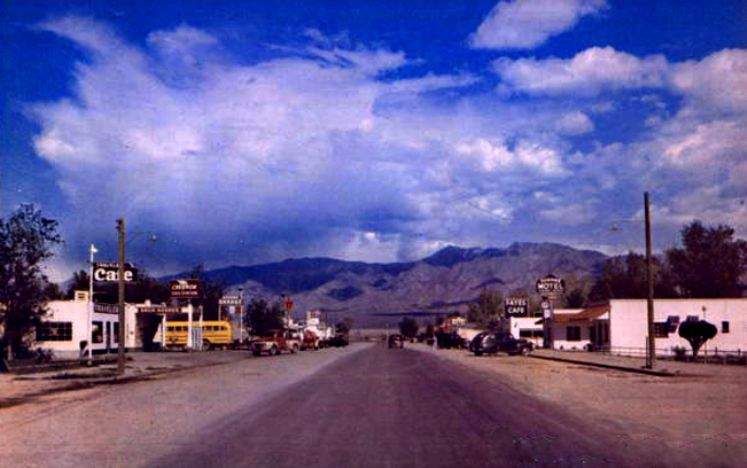
Looking east on Mesquite Boulevard near the intersection of Yucca Street. None of the structures no longer exist. The structures on the right side of this picture have been replaced with the Mesquite City Hall.
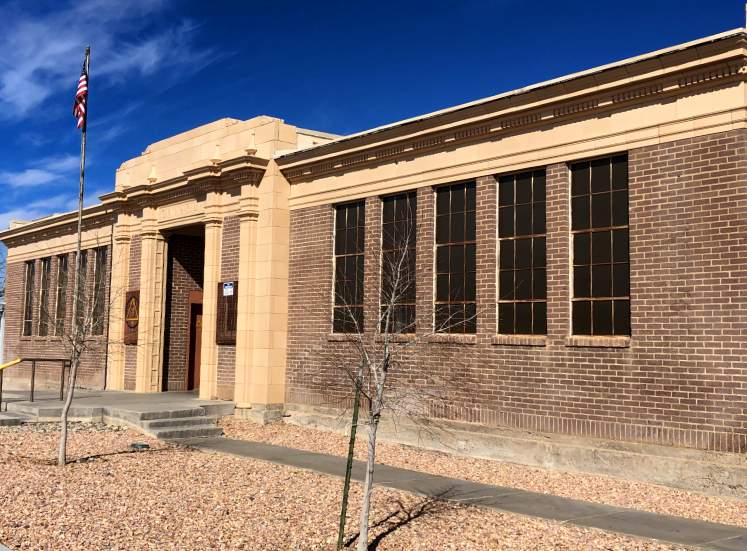
Mesquite High School Gymnasium. Listed on the National Register of Historic Places.
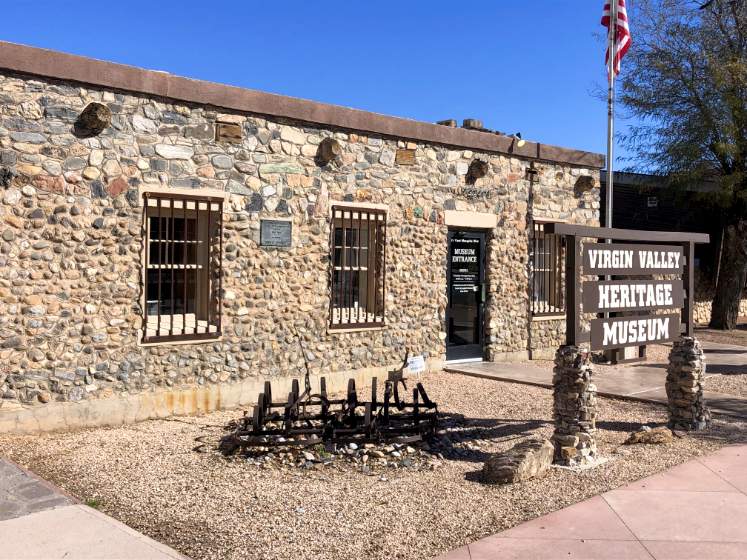
Virgin Valley Heritage Museum. Listed on the National Register of Historic Places.

Edward Bunker House.
"Bunkerville, Nevada (2)" by Ken Lund is licensed under CC BY-SA 2.0.
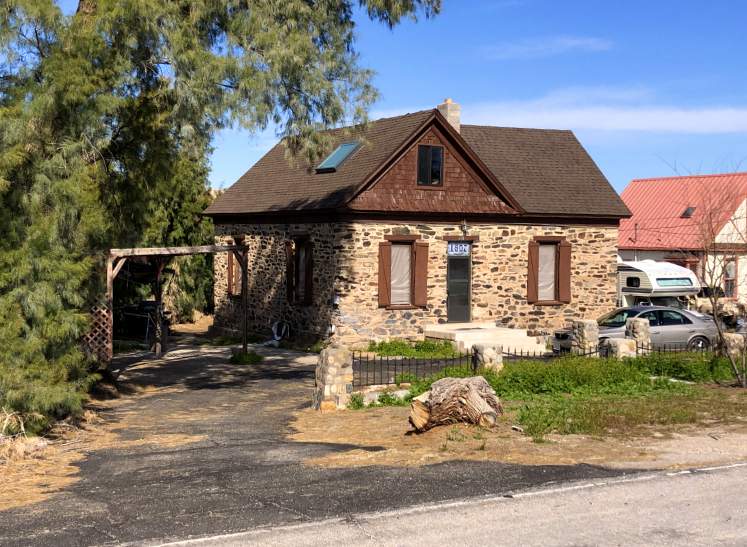
Parley Hunt House. Listed on the National Register of Historic Places.

Thomas Leavitt House. Listed on the National Register of Historic Places.
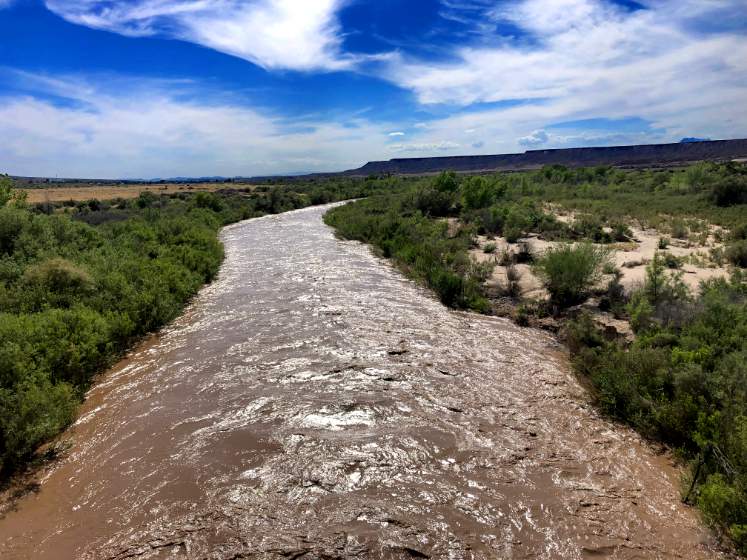
The Virgin River.
"The remoteness of the area, the water woes, the scanty provisions, the scorched earth, and undoubtedly the scorpions, badgers and snakes offered incentive for settlers to recoil, rethink, and reestablish elsewhere.
Mesquite had its origins in February 1880, when leaders and selected families of the Church of Jesus Christ of Latter-day Saints gathered on the northeast bank of the Virgin River. At that time William Branch was sustained as bishop, and church members were given specific duties related to the cotton enterprise. Because water was critical, the pioneers dug a seven-and-a-half mile irrigation canal to be breached in fifty-eight places. A month later, Bishop Branch dispatched this report: The brethren are steadily working on the canal, 12 of the men are down with chills, leaving but 9 at work…110 degrees in shade, and 140 degrees where the men work and filthy water to drink. Families began to leave. By 1883, when Dudley Leavitt’s family moved to Mesquite, the town was deserted. Wide spread damage from subsequent storms forced the Leavitts to relocate as well.
After two failed attempts to settle Mesquite, a few resolute men, including William Abbott, camped along the abandoned irrigation canal. The year was 1894, and the workers, all in their early twenties, labored to repair the damage. Their rations consisted of an occasional crust of bread, molasses, and warm milk from an old red cow tied to a wagon. In a miraculous way the youthful men prevailed. Water once again flowed, the land was fenced and divided, crops were planted, school classes began, and a voting precinct and post office were established. By 1900, nineteen families called Mesquite home – a humble home, as they lived in wagons, tents, adobe structures and under tarps.
Those who continued on in Mesquite harvested meager crops, were resourceful by necessity, and resolved to be cheerful. In their poverty there arose a noticeable attachment and tenderness toward one another. Soon, life in Mesquite offered more then mere existence. There were magical musical moments: singing, choirs, bands, and dancing. Poetry was written, recitations given and nearly all tried their hand at acting. Reveling in celebrations, they used an excuse to feast, picnic, and compete in sports.
In due course, Mesquite became known to the outside world. Mesquite’s grapes and pomegranates took first place at the San Francisco Fair in 1906. Young men served their country, missionaries went forth, trails became roads, and roads became highways. Highways needed bridges, all of which required a united effort at home and input from outside.
Etched in the past – more than the dam, the road, or the bridge – are the builders, the dreamers: those willing to dedicate their lives for a better tomorrow. Tomorrow is here and dreams do come true."
(City of Mesquite)
"Famed western explorer Jedediah Smith visited Virgin Valley in 1826. Captain John C. Fremont passed through here in 1844.
The valley served as the right-of-way for the Old Spanish Trail (1829-1848) and for the Mormon Road or southern route of travel to southern California.
Pioneers of the Church of Jesus Christ of Latter-day Saints settled the area of Bunkerville in 1877 and Mesquite in 1880.
The Virgin River provided water for the development of the valley’s agricultural resources."
(Nevada Historical Marker 56)
"Stretching for 130 miles across Clark County, this historic horse trail [Old Spanish Trail] became Nevada’s first route of commerce in 1829 when trade was initiated between Santa Fe and Los Angeles. The trail was later used by the wagons of the “49ers” and by Mormon pioneers. Concrete posts marking the trail were erected in 1965."
(Nevada Historical Markers 31)
"On January 8, 1877, Edward Bunker, Sr., Edward Bunker, Jr., Dudley Leavitt, Lemuel Leavitt, George W. Lee, Samuel O. Crosby, and seventeen other pioneers crossed the Virgin River and built, on this site [near Riverside Road and Agnes Street], the building that contained a table, which became the central gathering place of their United Order."
(Bunkerville Historical Monument)
"Mary Jane was Mesquite’s Angle of Mercy. Her satchel, filled to the brim with mustard plasters, castor oil, chaparral tea, and other supplies, sat by her door ready for any emergency. She delivered babies, cared for the sick, and brought hope to the disheartened. When a crisis occurred, the cry, Get Aunt Mary Jane ricocheted across the valley and any call for help spurred her into action.
Born in 1873, at Gunlock, Utah, Mary Jane was the tenth child and second daughter of Dudley and Mary Huntsman Leavitt. A delightful addition to the family, she was high spirited and independent – notorious for expressing her opinion. When she was four years old, the family moved to Bunkerville, Nevada, where she met William Abbott. They later married and moved to Mesquite, She gave birth to thirteen children: Christina, Dorothy, Josepha, Orval, Emily, Oscar, Gussie, Anthon, Deloy, John, Rulon, Claude, and Allen.
Shunning personal praise, Mary Jane valued and paid tribute to other woman. She called them her sisters, knowing them to be wise, compassionate, and independent. In addition to rearing families, these women preserved food, rendered land, and made soap and candles over an open fire. They served one another by attending to the physical and emotional needs of the living, and comforting the bereaved, and making paper flowers to honor the deceased. Together they were unstoppable! They planted, tended, and picked cotton while babies played in furrows and children lugged cotton sacks. Wagons hauled the cotton to Washington, Utah, where the going price was three-and-a half cents per pound. In turn, the women received brooms, oil cloths, petticoats and other supplies – a mere pittance for their labor. The bulk of the profit was generously allocated to a women’s fund used for community needs such as cloth for burial clothes and casket linings.
Charity Never Faileth was more than their motto: it was what they lived by. Mesquite thrived because good women performed good works. This was the expression of their faith – etched with indelible ink. This sculpture is in honor of those pioneer women whose works are a keepsake from the past and whose faith is a beacon for the future."
(City of Mesquite marker)
"At the age of eight, William journeyed from his birthplace, Ogden, Utah, to Bunkerville, Nevada. The year was 1877, and Will, a youthful participant in establishing the town, was a keen observer. He listened to debates, took note of critical decisions, and became skilled in diplomacy. In his youth, Will raised melons, picked cotton, cared for animals and made molasses. Later, he delivered mail pony express style, peddled produce to mining camps, hauled salt from St Thomas to Silver Reef Mine, and herded three thousand steer from Arizona to Utah.
After completing a mission to Illinois for the Church of Jesus Christ of Latter-day Saints, William was called to be bishop of the Mesquite Ward, a position he held from 1901 until 1927. His involvement in church and community affairs was unequaled and his leadership extended to all people. He was on the town board, school board, board of directors of the grape farm, and chairman of the telephone committee. Will was involved in the building of a bridge between Mesquite and Bunkerville – and when completed – he was in charge of the Bridge Day Celebration. He was a judge, justice of the peace, farmer, delegate to the International Irrigation Congress, and amateur dentist, and with his wife, ran a hotel and café.
William championed the road-building cause. He surveyed the original road between Las Vegas and Mesquite. He campaigned for and took charge of the construction of a road, which was one hundred feet in width and a mile-and-a-half long. This was a grueling, three year project as even a bird couldn’t fly through the dense, impassable underbrush. The road is now known as Mesquite Boulevard.
Maintaining the dam was also a challenge. When the all-too-familiar cry, the damn dam is out, spread by word of mouth, men promptly transported available teams and wagons to the dam site. Will wrote, I have worked in the river building dams in water up to my neck for two and three weeks at a time. We put into our dam at one time 300 loads of brush and 500 loads of rock.
The establishment of Mesquite was not a one-man effort. Settlers moved in for a variety of reasons and were endowed with a diversity of talents. It took strong minded and strong-backed men with unwavering conviction to make Mesquite a viable community; men who were willing to surrender their own comfort and welfare for future generations."
(City of Mesquite)